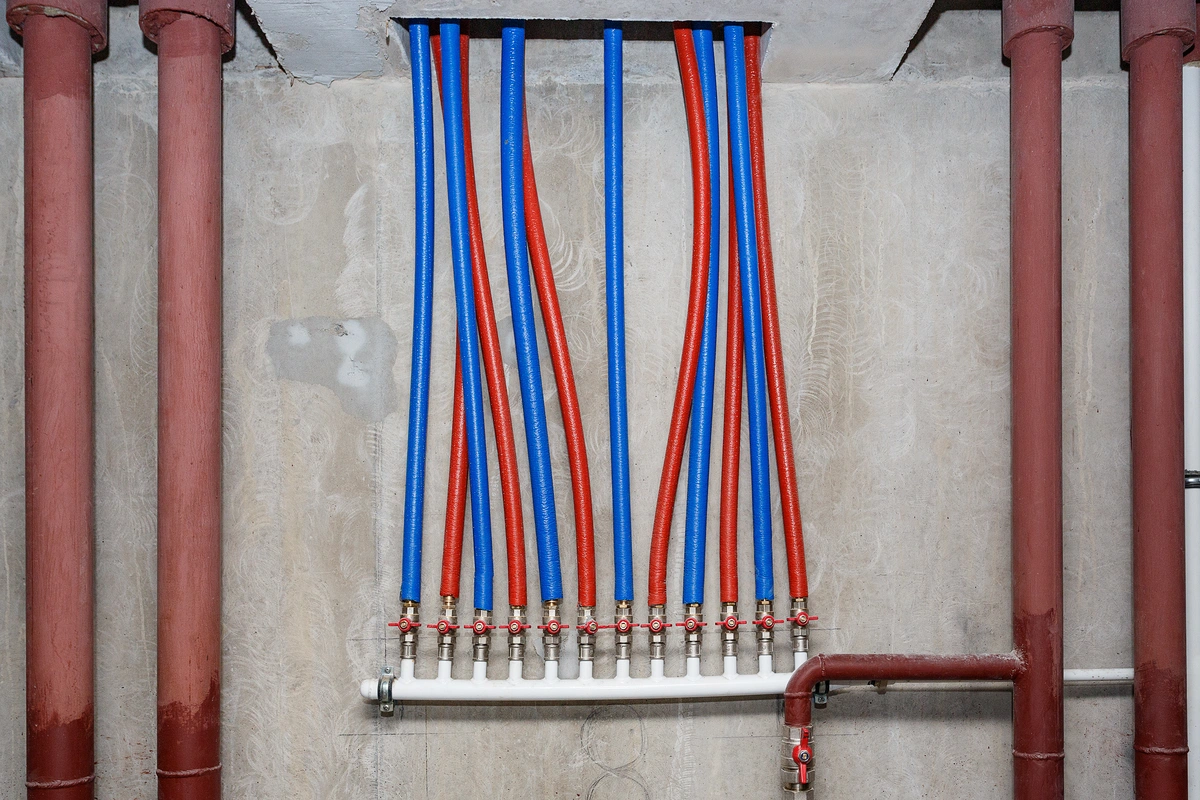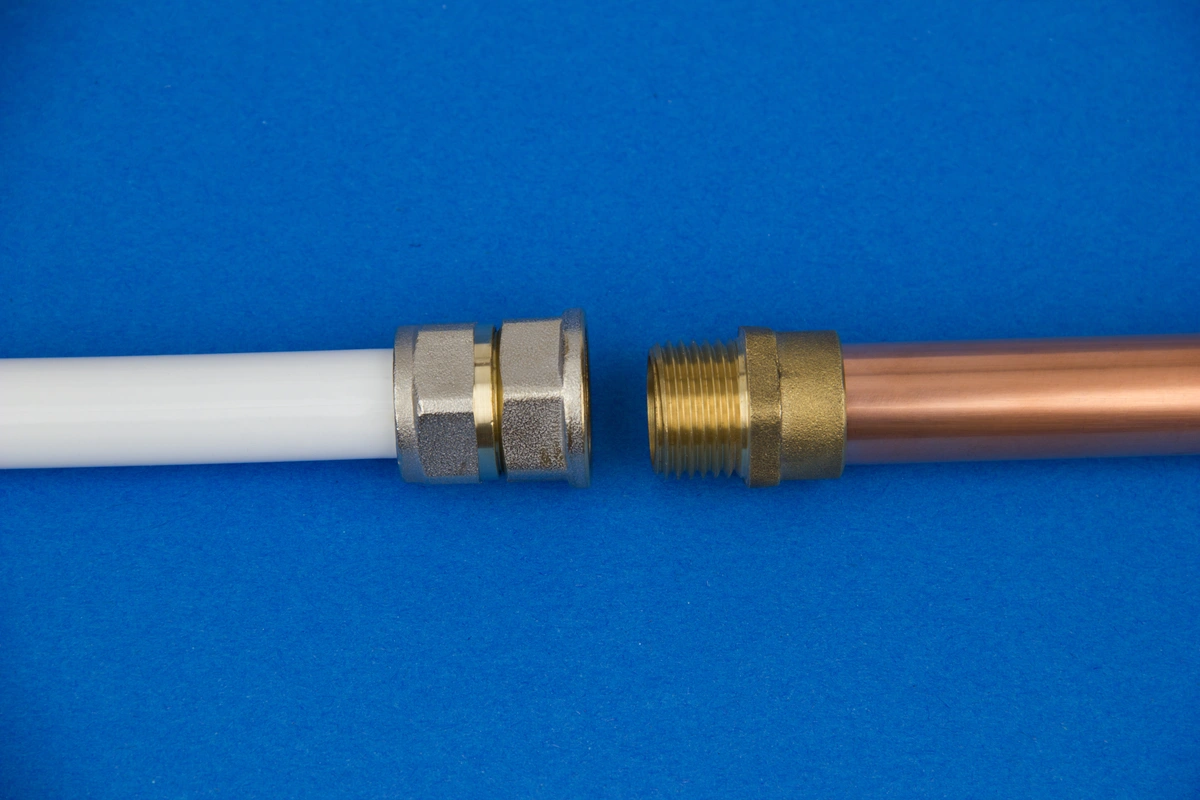Copper piping has been the standard for supplying homes with water since the Ancient Egyptians, thanks to its longevity and capacity to hold up to higher temperatures. However, cross-linked polyethylene (PEX) pipes also have a lot of advantages in today’s world, including being more environmentally friendly as well as cost-effective.
But which is better for your home?
Below we’ll give you a breakdown of the PEX vs copper pipe regarding:
- Key difference in usage 🔑
- Durability 💪
- Environmental impact 🌍
- Cost 💲
- The advantages they have over one another ➕
Keep reading to learn more about how the two types of plumbing materials differ and which one wins out in the end.
PEX Vs. Copper Pipe: Use

When we compare PEX and copper pipe use, what we are really measuring is how they perform and how long they can be used. This includes how accessible they are to homeowners and plumbers and how easy or difficult the installation process is.
Length of Use 🗓️
Copper pipes easily outlast PEX pipes by approximately 20 years. You can expect copper pipes to last anywhere between 50 and 70 years, whereas PEX pipes will last between 30 and 50 years.
While 70 years is a long time, 20-50 years is more than enough for those living in a starter home or looking to sell after their kids are grown and off living their lives and retirement has set in. Either way, both materials are excellent options in terms of lifespan.
Installation and Maintenance 🔧
When it comes to installation, copper pipes are manufactured in straight tubes. Therefore, they need to be cut down to specific lengths and welded in order to make connections, which is quite the process.
PEX, on the other hand, is much more flexible and easier to install. Its installation process is also less invasive compared to copper as the piping can simply be snaked through the walls. The ease of installation for PEX is what also makes it DIY-friendly for the handy homeowner. With copper, your plumber will have to cut out sections of drywall to install the pipes.
Because of this, PEX piping is also easier to maintain, whereas copper requires a lot more work (and usually the help of a professional) when something goes wrong. For example, if your copper pipes spring a leak, your plumber will have to cut into the wall to reach them — and then re-patch that wall and paint it.
Plumbing Access 🪠
PEX piping systems come with their own water distribution manifold, which comes with individual valves that lead to different parts of your home. Therefore, turning off individual water supplies is much easier when you need to fix your tub, kitchen sink, washing machine, and any other water-based appliance.
Copper piping only allows you to shut your home’s water supply off at once rather than individually. This means you won’t be able to do any housework that involves water while your plumbing is being worked on.
PEX Vs. Copper: Durability

When it comes to durability, PEX pipes tend to come up short due to their materials.
Essentially, PEX piping is more susceptible to damage caused by extreme temperatures, chemicals, and regular wear and tear. It can’t handle temperatures over 180 degrees (Fahrenheit) or high amounts of chlorine, whereas copper can.
Conversely, PEX is much better at handling water with higher acidic levels compared to copper pipes; however, copper pipes are more prone to freezing during the wintertime. This can be a serious issue for older homes with dated plumbing systems.
What’s more, PEX pipes aren’t as resistant to regular damage as copper pipes as the material can easily be damaged by UV rays and even rodents that may have a tendency to chew through it. Plus, if PEX piping ends up rubbing together, it can cause the material to fray and spring leaks.
Aside from freezing and acidic water issues, copper pipes are the much more durable option here. They’re also less likely to spring a leak with normal wear and tear — and rodents certainly can’t chew through them!
PEX Vs. Copper: Environmental Impacts
Another area where PEX pipe material seems to do better is where the environment is concerned.
There’s nothing eco-friendly about mining copper for utility usage. Strip mining tends to destroy the areas of land used for the mining and produces massive amounts of waste that are notoriously difficult and costly to manage. Creating copper mines also displaces native animals and produces pollution, which can affect the individuals living nearby — plus, the manufacturing process is destructive as it requires more energy.
The upside to copper piping is that it can be recycled over and over again. However, PEX pipe material is produced in more sustainable ways. It can also be used without needing additional welding and cutting. It can also be ground up for further use in manufacturing.
PEX Vs. Copper: Costs
Copper pipes are more expensive than PEX pipes by a lot. Generally speaking, PEX is between 20% and 80% cheaper than copper. The labor costs are also less as it’s easier to work with during installation and maintenance, which can leave you with more money down the line when you need to make repairs.
Copper pipes are not only expensive up front, but the installation also comes with a hefty price tag, as does the maintenance and repairs that you’ll need to make over time.
Keep in mind that a leaky copper pipe can tear up your drywall, and when old piping needs to be replaced, you’ll need new drywall after the installation process is finished. Plus, it’ll need to be patched and painted — which also costs money.
Of course, you can depend on your copper piping to outlast PEX material by more than 20 years, which makes it worth the investment for many homeowners. However, PEX is an evolving material, and manufacturers are always looking for ways to make it more efficient and longer-lasting.
In the future, PEX pipes may be able to last just as long — if not longer — than its copper counterpart. It may also be able to withstand extreme temperatures and chemicals, which would render copper obsolete.
PEX Vs. Copper Pipes: Who Wins?

It would seem that, in no uncertain terms, PEX pipes are much better than copper. They’re more affordable, easier to work with and maintain, and are even said to be quieter. They’re also constantly evolving to become better.
However, PEX isn’t ready yet to handle all of your home plumbing needs. This means copper pipes still have an important role in the home, as it may be a while before PEX pipes can completely replace them.
If you’re looking to get started with PEX pipe material, it’s essential that you find a professional plumber that can determine the right ratio of both materials for your home and needs.
Ready to Update Your Plumbing?
Even with all the advantages that PEX piping has over copper, it can still be tough to decide between the two when you need to update your plumbing. That’s where an experienced plumber will come in handy, as they can steer you in the right direction based on your budget, needs, and concerns.
A.J. Alberts Plumbing has been making plumbing painless for homeowners since 1989. Get in touch with us today to learn more about the materials we recommend and to book a home inspection so we can assess the current state of your plumbing!



